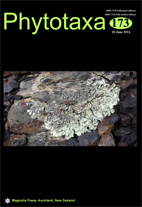Abstract
This study tests the phylogenetic affinity and clarifies the taxonomy of Frullania tamarisci s. l. in Russia and adjacent areas based on critical morphological reinvestigation and DNA analyses. More than 100 accessions of F. tamarisci s. l. from the collections of KPABG, VBGI and UBC were studied morphologically, and the nrITS1-5.8S-ITS2 and trnL–trnF cpDNA loci of sixteen accessions were sequenced. Molecular data were combined with accessions from GenBank and phylogenetic estimations by maximum parsimony, maximum likelihood and Bayesian approaches were performed. The tree topologies obtained were congruent and resolved the specimens previously referred to F. nisquallensis from Russian North in a clade together with an accession from Alaska. This clade is only distantly related to European F. tamarisci s. str. and temperate western North American F. nisquallensis. Taking into account the morphological differences, we describe a new species Frullania subarctica Vilnet, Borovich. & Bakalin sp. nov. The species status for F. appendiculata occurring mainly in temperate East Asia was supported by molecular evidence, based on specimens from the Primorsky Territory of Russia. Populations of F. tamarisci s. str. from the Russian North West and the Caucasus Mountains are quite similar to those from European countries both morphologically and molecularly.

